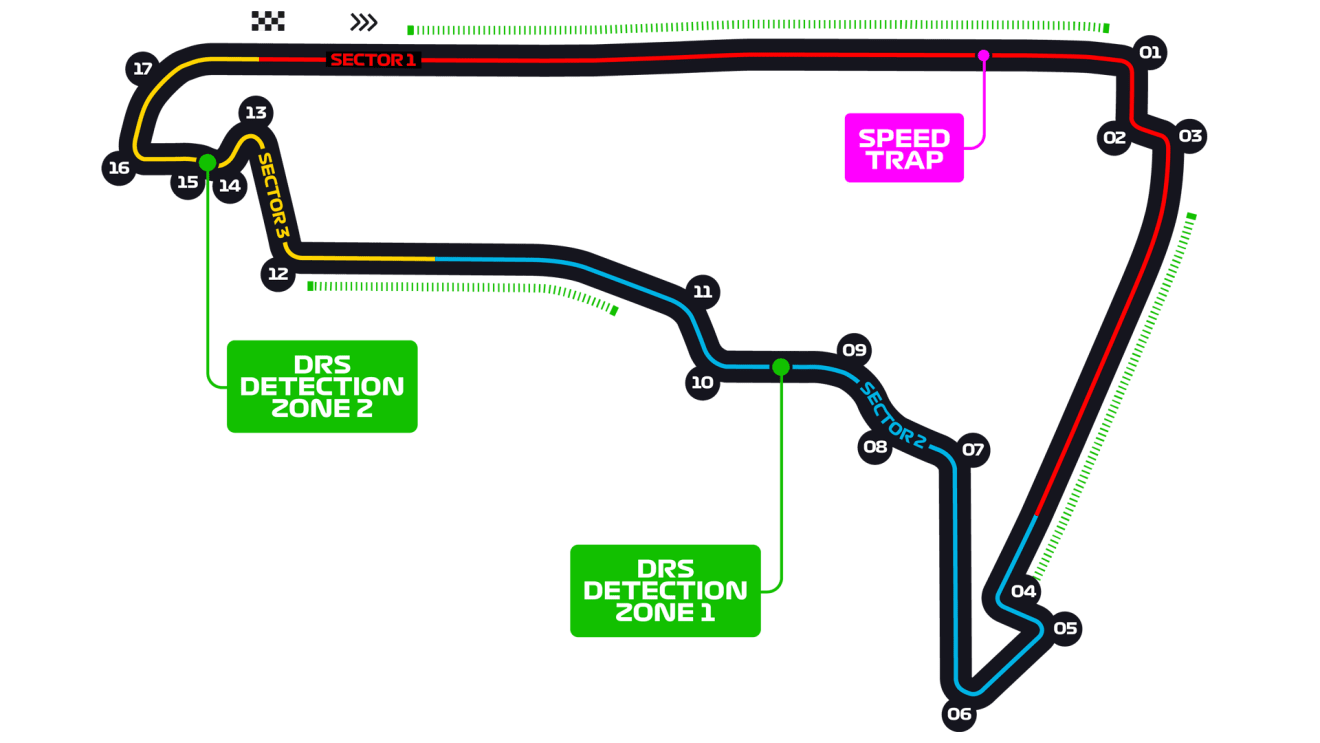Presentation of the Mexican Grand Prix: F1 facing the challenge of altitude
One week after the United States, Formula 1 crosses the border to go to Mexico and its Autódromo Hermanos Rodríguez for the Mexican Grand Prix. This race stands out for its high altitude, which reduces aerodynamic support and complicates engine cooling. Here is everything you need to know about this speed altiplano.
The Texan show gives way to the Mexican fiesta this weekend for the twentieth round of the 2024 F1 championship. Since its return to Formula 1 in 2015, the Mexican Grand Prix rarely disappoints. The circuit’s alleys are invaded every day by thousands of supporters.
Last year, no less than 400,000 Formula 1 fans livened up the atmosphere during the three days of the race. This year should be no exception to the rule since ticket sales have been sold out for nearly a year for this circuit, the most urban of non-urban circuits, located about ten kilometers from downtown Mexico City and its metropolis of 21 million inhabitants.
A historic tour
The construction of the Autódromo Hermanos Rodríguez took place in 1959. It is named in honor of the brothers Ricardo and Pedro Rodríguez, two Mexican legends of motorsport in the 60s and 70s. It was their father, an advisor to Mexican President Adolfo López Mateos at the time, who brought this project to the table. The idea was to build a circuit within the Magdalena Mixiuhca sports park in Mexico City, using the existing internal roads.
Completed in 1960, the circuit hosted its first official Formula 1 race in 1963, won by Jim Clark. The Grand Prix was no longer scheduled from 1971 before making a comeback in 1985. It was once again absent from 1993 and returned for good to the F1 calendar in 2015. Its layout has hardly changed since its construction, with a few exceptions. The Peralta corner was notably modified to make the circuit wind its way through the former baseball stadium Foro Sol, offering one of the most unique views in F1.
The highest circuit on the calendar
The altitude at which the Autódromo Hermanos Rodríguez is located makes it unique. Perched at 2,285 meters above sea level, the track requires a different approach from the teams and drivers to tackle this Grand Prix. The altitude greatly influences the performance of the cars. Engineers must then redouble their efforts to develop the best possible aerodynamics, as the low air density makes engine cooling and car grip challenging.
The drivers will have to cover, during Sunday’s race, 71 laps of this 4.304 km long circuit. It features a mix of long straights, technical corners, and a particularly recognizable slow section: the famous Foro Sol stadium, which immerses the drivers in an electric atmosphere with packed grandstands.
Three well-defined sectors
Being efficient in one of the sectors is not a guarantee of success at the Autódromo Hermanos Rodríguez. The three sectors have very specific characteristics that require the cars to be effective in several areas. Sector 1 consists of two long straight lines, including the pit straight, which is 1.2 km long.
Sector 2 includes a succession of fast and technical corners during which the precision and control of the drivers are crucial. Finally, sector 3 and its Foro Sol stadium is the slowest portion of the track, allowing drivers to enjoy the electric atmosphere that can be found there.
A one-stop race?
The altitude could lead teams to opt for a one-stop strategy. Pirelli insists that it is generally a one-stop race, with tire degradation due to downforce forces being lower. However, high temperatures and race incidents could still lead different teams to change their strategies.
This had been the case last year after the appearance of the red flag following Kevin Magnussen’s accident at turn 8 on the 33rd lap. It is worth noting that the Italian manufacturer will provide the same tire sets as for the 2023 edition: the C3 compounds will correspond to the hard tires, the C4 to the mediums, and the C5 to the soft tires.
Find here: TV schedule and times for the 2024 Mexican Grand Prix

